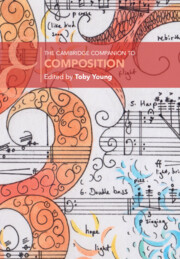Book contents
- The Cambridge Companion to Composition
- Cambridge Companions to Music
- The Cambridge Companion to Composition
- Copyright page
- Dedication
- Contents
- Figures
- Tables
- Music Examples
- Contributors
- Introduction
- Part I Creative Processes
- Part II Techniques
- Part III Styles, Conventions, and Issues
- 12 Dots, Squiggles, and Words
- 13 Sonorities and Spectra
- 14 Electronic Composition
- 15 Transcultural Composing
- 16 Nothing New Under the Sun: Composition as Adaptation
- 17 Composition and Ecological Listening
- Part IV Building a Career
- Further Reading
- Index
13 - Sonorities and Spectra
from Part III - Styles, Conventions, and Issues
Published online by Cambridge University Press: 25 May 2024
- The Cambridge Companion to Composition
- Cambridge Companions to Music
- The Cambridge Companion to Composition
- Copyright page
- Dedication
- Contents
- Figures
- Tables
- Music Examples
- Contributors
- Introduction
- Part I Creative Processes
- Part II Techniques
- Part III Styles, Conventions, and Issues
- 12 Dots, Squiggles, and Words
- 13 Sonorities and Spectra
- 14 Electronic Composition
- 15 Transcultural Composing
- 16 Nothing New Under the Sun: Composition as Adaptation
- 17 Composition and Ecological Listening
- Part IV Building a Career
- Further Reading
- Index
Summary
This chapter presents an understanding of compositional practice based fundamentally on sound and space, and looks at a range of case studies that explore the harmonic, timbral, and material consequences of this approach. The chapter concludes by arguing that the variety of approaches discussed succeed because the concern with sound permeates every stage of compositional thinking and does not just manifest in specific compositional techniques.
- Type
- Chapter
- Information
- The Cambridge Companion to Composition , pp. 198 - 216Publisher: Cambridge University PressPrint publication year: 2024

